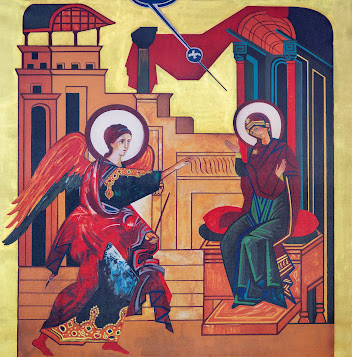[The following is an adapted translation of a recent Osservatorio article.]
A 2020 American study reports that 70% of surveyed Catholics do not believe in the Real Presence.
One priest, commenting on the belated reaction of the US bishops, remarked, "It is rather like a man being bitten by a shark and only screaming an hour later."
In fact, this lack of faith in the Blessed Sacrament has been going on for half a century--precisely the span of time in which certain "theological lucubrations" took effect, intended to make the people feel more like "protagonists" in the liturgy, that is, to make the liturgy a little self-managed performance: precisely the same mistake that occurs in the Neocatechumenal "small communities."
The author of the article linked above proposes four solutions to buffer the problem:
- bring the tabernacle back to the center of the church (instead of hiding it in some side chapel)
- abolish communion in the hand
- eliminate so-called "extraordinary ministers"
- restore "kneeling-only" communion
The central tabernacle visually serves to make it clear that God is the "Lord of the house" and it is He towards Whom everything is oriented. The first thing that strikes you is what you see, which is why churches have always historically been beautiful, harmonious, and full of art: beauty will save the world, says Dostoevsky, but that same beauty has already largely contributed to the faith of twenty centuries of Church history.
If the tabernacle is not central, the idea is visually conveyed that the church is a kind of "liturgical hall," a place where "prayer activities" are conventionally held--a reductive concept indeed compared to a "place consecrated by God." And so, in the long run, the sacraments are gradually perceived as mere additional symbols to the liturgical form and the sacred furnishings used.
We recall that in the Neocatechumenal Way, this "liturgical hall" is almost always a small, isolated room that has nothing sacred and is filled only with Kiko-designed gadgets--a small room (or hotel hall) in which to "celebrate" separately (therefore functional to "separate from the Catholics"). As if the Way were a Kikolatric religion completely foreign to Catholicism, of which it limits itself to aping certain formulas and ceremonies.
Communion in the hand, even more than the figure of the so-called "extraordinary minister," visually conveys the idea that the Blessed Sacrament is a kind of "symbolically important snack, perhaps even a little sacred," for which a priest (that is, a consecrated intermediary between man and God) is not even necessary.
And in fact, in the Neocatechumenal Way, the liturgical waiter "will come and serve them," as Kiko says, subverting the principle that only the priest is the intermediary between man and God.
Those who have lost faith in the sacrificial aspect of the Eucharist quickly exaggerate the "banquet" aspect (and in the case of the Way, take it to extremes with "seated Communion," as if it were you generously granting an audience to God).
With seated Communion where you are served, the idea is conveyed in particular way that "it would seem bad not to receive Communion" (how many Neocatechumenals loaded with mortal sins make sacrilegious communions!). The idea is transmitted that everything must be festive and convivial (including everyone pretending to be happy to make others believe they are "doing well"). The idea is conveyed that Communion is a "symbol of community unity," rather than the most important moment of your personal journey towards salvation; so much so that in the Way, the particle is eaten "all together at the same time as the priest," contrary to what is provided for by the liturgical documents.
The Catholic way of receiving Communion, that is, on one's knees and on the tongue, made in procession (one goes to receive it), from the priest (rather than from a so-called "extraordinary minister") instead leads the faithful to understand many things. For example:
- The priest is the intermediary between man and God. It was our Lord who instituted the priesthood, in the person of the Apostles, and therefore those to whom the Apostles have transmitted the mandate. No layman should assume priestly prerogatives.
- Only through the priest can you receive the Bread of Eternal Life.
- The decision to receive Communion is your personal free choice--you process for Communion by your own choice.
- Communion is not an obligatory gesture: anyone can decide not to receive, simply by not getting up to go receive it--whether because they may not have a clear conscience, or even just because they plan to participate in another Mass, or have already received Communion in a previous Mass that day.
- It is wrong to consider not taking Communion "undignified" - there is no symbolic representation in doing it "all together."
- You humbly welcome the Lord on your knees, since the Bread of Eternal Life is the true Body and Blood of Our Lord Jesus Christ. It is not a symbol, and it is not a gesture that symbolizes something else.
- Kneeling (when healthy and able) helps you physically understand the importance of what you are doing and the need to be humble before the Lord.
- Your hands, even if neat and clean, are not the consecrated hands of a priest and are not worthy to touch the Blessed Sacrament. After all, you are receiving Communion for your own salvation, not to perform some pseudo-religious show. The important thing is to eat the Bread of Eternal Life, not to take some kind of "sacred token of sacred presence."


No comments:
Post a Comment